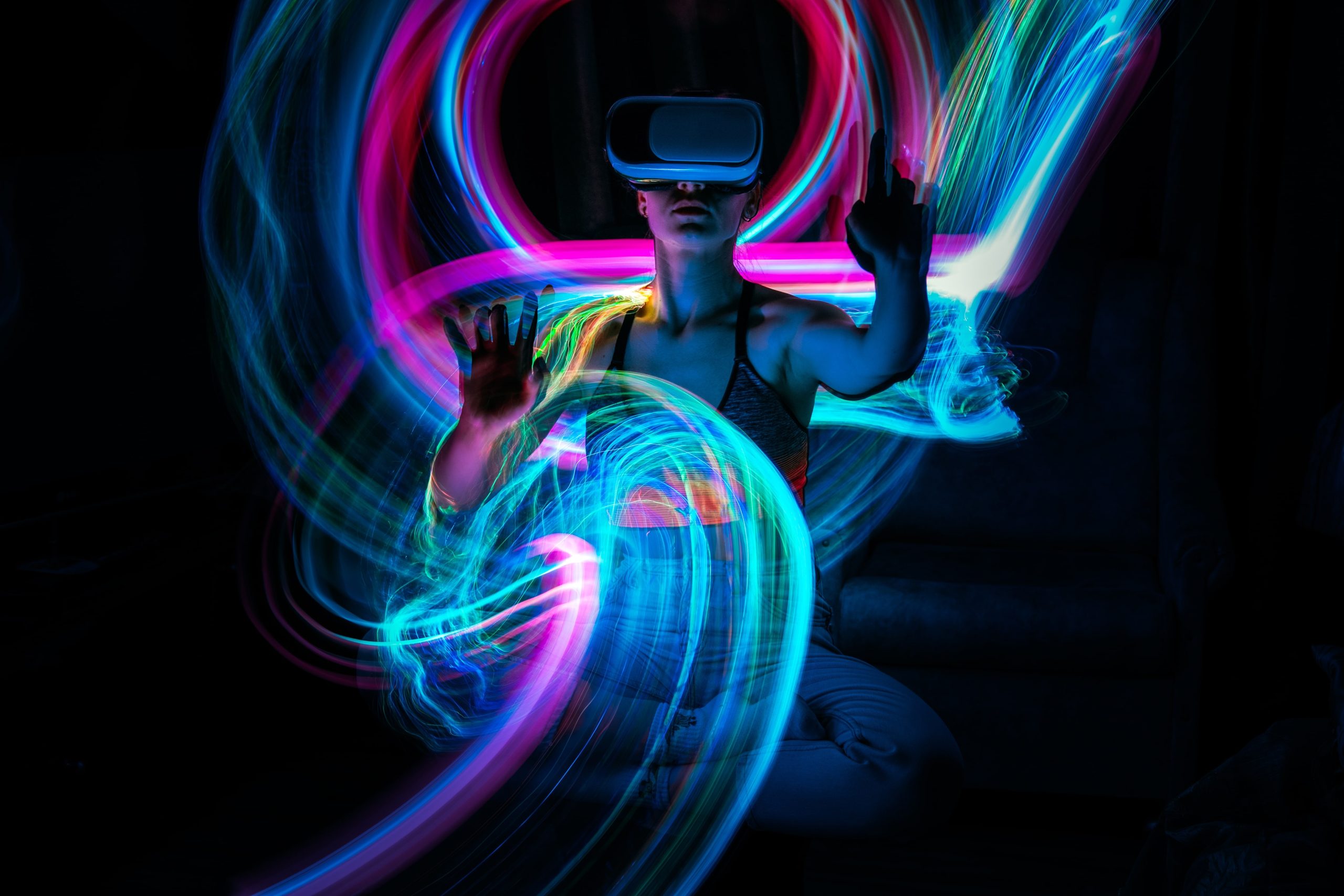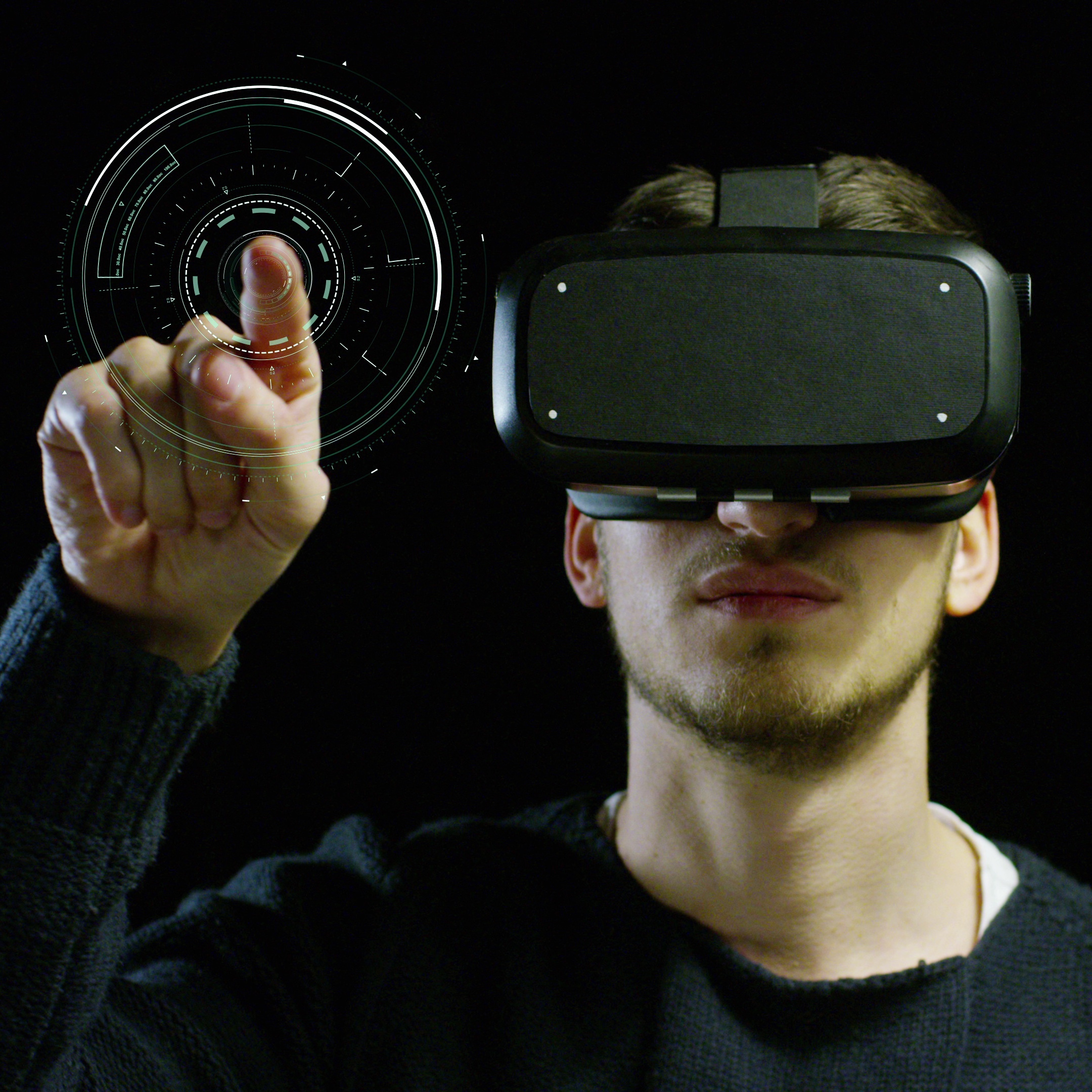Marketers: Take a page out of these top 10 virtual experiences in the world
If you’re mulling VR-based marketing and advertising, you probably have a fair idea of the costs. Some experts place costs at USD 5,000 to 15,000 for the most basic VR content development portion of the exercise and another USD 5,000 to 40,000 for the backend. The cost of hardware, menu/personalization options, shareability, and the other “add-ons” represent incremental costs.
Moreover, there’s no denying VR’s growing popularity as an advertising medium. Statista projects the global VR market’s 2024 earnings at USD 174 million and estimates that earnings will reach USD 184 million by 2028. In other words, you can’t exactly ignore VR-based customer outreach.
When you’re putting down top dollar to bring a VR experience to your customers, you want it to deliver on your investment through its quality and its ability to help you further your goals— whether it is showcasing a product to a customer or creating trust by showcasing production facilities or obtaining buy-in when demonstrating a concept.
In this blog, we’ll look at the top 10 virtual experiences in the world to learn from across sectors and use cases so that you can draw inspiration and learnings to apply to your VR projects.
Perfect Partnerships
Strategic partnerships can help your VR content reach a wider audience. The keyword here is strategic. Your partner should help you to access an audience that is ripe for your message or product. Correspondingly, they would expect you to either do the same for them or at least provide them with content that their audience will enjoy.
Let’s look at some examples:
The Madame Tussauds website describes their attraction as a “cinematic experience brought to life like never before in a one-of-a-kind experience inspired by the 2016 film”. An expert reviewer described the VR experience as more of a “holodeck” but went on to say that “The proton-blaster feels warm when they fire, and crossing the streams produces insane results. Standing on top of a virtual building is a frightening experience, so much so that venturing out on the platform is a tentative endeavor.” No wonder this one’s numero uno is on our list of the Top 10 VR experiences in the world.
How you can play the same card:
When you read the fine print, you discover that the attraction is a collaboration between Sony Pictures, Ghost Corps, and the VR studio, THE VOID with Madame Tussauds. If you promote films, television, and OTT content, or even theme parks and other tourist attractions, offering your VR content to public attractions or even other ticketed tourist attractions can help you widen the reach of your VR content and further your goals.
Depending on your product, behind-the-scenes VR might also deliver value—it is easy to see how a petroleum factory tour could be part of a career fair and expo for middle-school to post-grad students, or even become a centerpiece at a manufacturing summit for sector stakeholders, including potential prospects.
VZfit transforms workouts into a global adventure by utilizing Google Street View images. Users can pedal through the scenic Alps, follow the path of the Tour de France, or embark on a coast-to-coast trip across the United States from Maine to California.
How you can play the same card:
Vzfit’s integration with Google Street View images sets a precedent for creating VR experiences through strategic partnerships. You can replicate this by partnering with well-known platforms to boost your VR content’s reach and impact.
Consider offering your VR experiences to Meta or Google for free, positioning your content on platforms that already have massive user engagement. For instance, linking VR tours to Meta’s website or Google Arts & Culture can expose your content to a broader audience, enhancing visibility and interaction.
Aspiration-Building Exercises
Brands like Disney and Marriott have perfected the art of building aspiration (and delivering look-before-you-book appeal) with VR tours, as have these worthy mentions on our list of the top 10 VR experiences in the world.
This up-close VR view of the historical site allows users to appreciate the intricate architecture and cultural artifacts and includes detailed narrations, making it feel almost like being there in person. However, for those who want to experience the grandeur of the Forbidden City in its full glory, a real-life visit is a must. The experience that the VR tour facilitates attracts people to the real experience.
How you can play the same card:
The Forbidden City’s VR tour delivers a compelling and detailed preview that piques interest and fosters a deeper connection to the site. You can leverage this approach by creating VR tours that highlight the most captivating aspects of your product or service.
For instance, a luxury real estate company could offer VR tours of high-end properties, allowing potential buyers to explore lavish interiors and scenic views. By showcasing the finer details and unique selling points through immersive VR, you create an aspiration for the real experience. According to a study by Matterport, listings with VR tours get 87% more views than those without. This shows how impactful immersive previews are.
You may also consider integrating interactive elements such as clickable hotspots for more information, background music, and narrative guides. These options can further enhance the VR experience and can be particularly effective in tourism promotion (but also in promoting a flagship store or state-of-the-art managed workspaces). For example, Visit Faroe Islands launched a VR tour that allows virtual tourists to explore the archipelago’s stunning landscapes and cultural sites, significantly boosting interest in IRL visits.
Educational institutions can also utilize VR tours to showcase their facilities to prospective students. The University of British Columbia, for instance, offers a VR campus tour, giving students a sense of the campus atmosphere and facilities.
Kruger National Park’s virtual safari offers 360-degree views, expert-guided tours, and informative commentary that provide close encounters with the Big Five, other exotic animals, and the stunning scenery of the South African bush.
How you can play the same card:
By offering a high-quality virtual tour, Kruger National Park can justify the higher costs associated with visiting in person—a safari in South Africa typically costs more than the same experience in Kenya; with a VR tour, it becomes easier to showcase why. If you market a premium experience, VR is your chance to depict the quality and exclusiveness of your experience in vivid detail.
And just like Kruger National Park, you can add value to the VR experience by integrating good old content. For instance, real estate companies can create VR tours with interactive floor plans and descriptions of a property’s features.
Luxury brands can also use VR to showcase the craftsmanship and uniqueness of their products, convincing customers of their superior value. Imagine a luxury coffee brand taking customers on a tour that showcases sustainable methods of sourcing coffee beans along the lines of how Nescafé and Google teamed up to bring people to Brazilian coffee fields.
Education Packaging
Most marketers learned all about pester power back in university when professors talked about how it was the way to get parents of young children to make purchases that are not necessarily for (or only for) the children. This includes holiday destinations, activities on those holidays, or even cars! (And it’s not even a new Gen Alpha concept or anything.)
Drawing from this, if you want to draw parents into a virtual experience (or draw them anywhere at all), you might want to either attract the kids or have something for the kids that the parents will find to be an irresistible education and learning exercise. Let’s look at some examples:
The National Museum of Australia showcases the documentary works of Sir David Attenborough through the First Life VR experience. The immersive journey takes viewers back over 500 million years to witness ancient seas and encounter long-extinct creatures in a way that traditional documentaries cannot match. The visuals and narrative are so convincing that sick bags are available for those prone to motion sickness.
How you can play the same card:
David Attenborough’s First Life VR demonstrates the potential of combining education with immersive technology to create engaging and impactful experiences. Businesses can leverage this approach in several ways.
For example, real estate companies can develop VR tours that showcase the behind-the-scenes aspects of a project, providing value for both parents and children. This could include interactive elements that explain sustainable building practices or the history of the property, making the experience both educational and entertaining. A quiz (with prizes!) for children could ensure that both kids and parents stay engaged with the VR presentation, enhancing the overall experience.
Automobile manufacturers can try VR experiences that deliver a behind-the-scenes look at the design and manufacturing process of their vehicles.
Additionally, the partnership between the producers of the VR content and the National Museum of Australia highlights the importance of collaboration. By creating valuable, attractive, and educational VR content, businesses can reach a wider audience through partnerships with public attractions and academic institutions. This strategy not only increases visibility but also adds credibility and educational value to the VR experience.
The Singapore Zoo offers a range of e-learning options designed to enrich virtual classrooms across zoology careers, reptile habitats, and African wildlife. By integrating these educational elements into virtual experiences, the Singapore Zoo creates an engaging and informative environment for learners of all ages (and positions the real zoo as the ideal choice for the next family vacation).
How you can play the same card:
This isn’t a tourism-only promotional strategy. A family car manufacturer could develop VR content that takes users behind the scenes of the production process, explaining the technology and safety features in an educational yet entertaining way. Guess who’s getting all the votes when the family picks their next car!
Gadget and appliance companies similarly create VR experiences that explain the science and technology behind their products.
Pro tip: Unlike grown-ups, children are less likely to sit quietly through something boring or poorly made, so it’s important to ensure the content is of high quality and genuinely interesting. The key is to make the educational content engaging and relevant to both children and adults.
Safe Thrills Packaging
Scandinavia’s first virtual reality rollercoaster is aptly named The Demon. Combining traditional rollercoaster thrills with a VR component, it offers a dual-layer experience. Riders not only endure speeds of 50 miles per hour but also encounter virtual demons, fire-breathing dragons, and firecrackers. This blend of physical and virtual elements intensifies the thrill, making the ride more exhilarating and unforgettable.
How you can play the same card:
The Demon Rollercoaster demonstrates how VR can elevate traditional amusement park rides by adding a new layer of excitement. Tourist attractions, including theme parks, can target audiences who may need help to participate fully by offering simulations that capture the essence of popular rides. This strategy is particularly effective for making attractions more inclusive. It allows people with disabilities and people of all age groups to experience the thrill from the comfort of their homes or more accessible areas within the theme park.
Available at various locations around the world, from Prague to Dubai, iPilot provides a buffet of flight simulator programs. In a replica cockpit, participants learn how to take off and land from their preferred airports, navigate the skies, and experience being both the pilot and copilot.
How you can play the same card:
By creating immersive and interactive VR experiences, industries can offer potential customers and trainees a taste of the real thing, enhancing their understanding and appreciation of the product or service.
The iPilot experience shows how VR can create incredibly realistic and engaging simulations. Automobile manufacturers can adopt this approach by developing VR experiences that offer virtual test drives of luxury vehicles and sports cars. This could include detailed simulations of driving in various conditions and environments, allowing potential buyers to experience the thrill and performance of the vehicle before making a purchase.
This approach can also be repurposed for private jet experiences, providing potential clients with a virtual tour and flight simulation to showcase the luxury and capabilities of the aircraft. Training and testing for commercial and private jet pilots can also benefit from such realistic simulations. Flight training schools could use VR to allow aspiring pilots to sample what the job would really look like, helping them make informed decisions about their career path.
VR as your USP
SoReal is set to open in the next year or so in China’s eastern Jiangxi province. In the meantime, VR enthusiasts can visit the 10,000-square-foot prototype in Beijing. In this experience, participants can embark on time-travel adventures, battle various monsters, and enjoy 4D movies.
How you can play the same card:
SoReal has effectively turned its VR prototype into the main attraction, offering a glimpse into what the full theme park will provide. This strategy can be replicated in various industries. For instance, in real estate, builders can create VR sneak peeks of corporate, residential, and commercial properties while projects are still underway—VR is still a novelty today, and for budget and mid-market properties, it can even become the reason why people attend your showcase. This approach allows potential buyers to explore the property virtually, fostering interest and providing an incentive for early investments. Builders often offer discounts to early buyers, and a compelling VR preview can drive early capital into the project.
As an extension, this approach can be applied to product and facility development. Companies can use VR to showcase prototypes and conceptual designs, making a case for future partners and customers even before the factory or product is operational. A facility in Munich, for example, uses VR to attract partnerships by allowing stakeholders to explore the site and its potential through a virtual tour. This not only helps in building early interest but also demonstrates the company’s commitment to innovation and forward-thinking practices.
The list of top 10 virtual experiences in the world is incomplete without LevelUp VR Arcade in Toronto, which offers an extensive selection of over 80 virtual reality experiences, making it a top venue for a variety of events, including bachelor parties, corporate events, and family gatherings. It provides an immersive experience with games ranging from action and adventure to sports and escape rooms. The arcade also offers unique features, such as haptic suits for added realism.
How you can play the same card:
LevelUp VR Arcade’s success lies in its ability to create a versatile and immersive event space. Businesses can adopt this approach by incorporating VR into their product as a central theme. Marriott added in-room VR experiences as a product differentiator way before the trend hit, almost a decade ago! Audi added a VR feature for backseat passengers in a selection of models that allows them to explore virtual worlds, where the car’s real-world movement synced with the experience they are having in the virtual world,
Similarly, brands with dedicated museums or showrooms can leverage VR to create more interactive and engaging exhibits. By turning a brand museum into a VR venue, companies can attract more visitors and enhance the impact of their brand storytelling. This approach not only draws more eyeballs but also provides a memorable and innovative experience that stands out in the competitive landscape. For instance, at magineu, we helped create a VR dome that allowed visitors to tour the facility of one of Asia’s petroleum powerhouses.
Wondering How to Get Started With VR?
If this round-up of the top 10 virtual experiences in the world has got you brimming with VR ideas for your own context, you’re on the right track when it comes to futureproofing your brand.
However, XR is high-cost and requires strategic thinking to deliver on ROI and become truly impactful. Magineu can help you navigate this exciting frontier. From concept to execution, we ensure your VR investments provide experiences that are as outcome-driven as they are immersive. We have already created high-impact VR experiences for brands like Tata Consultancy Services and have also worked with the Indian government to create VR experiences for India Energy Week 2023. Contact us to get thinking about VR for your brand.



